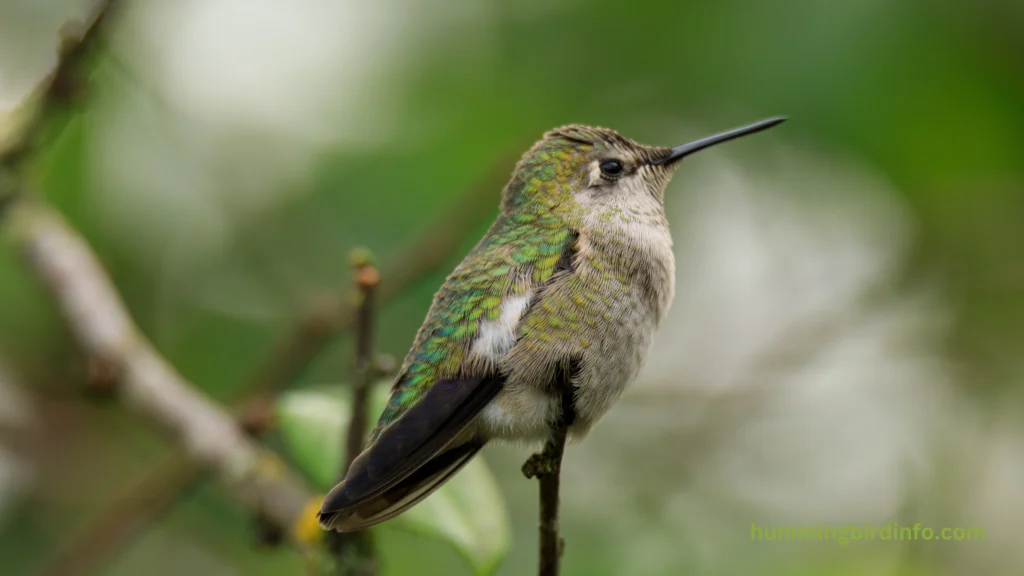Hummingbirds are among the most fascinating creatures in the bird world. With their iridescent feathers, ability to hover like helicopters, and lightning-fast wings, they spark admiration and wonder wherever they’re seen.
Many people fall in love with their beauty and start wondering—can you keep a hummingbird as a pet?
It’s a question that may seem simple, but the answer is much deeper than it appears. While the idea of having a hummingbird flitting around your home might sound charming, the truth is—hummingbirds cannot be kept as pets.
They are wild animals with very specific needs that cannot be met in a typical household setting.
This blog will explore why hummingbirds can’t be domesticated, diving into their biology, the laws that protect them, and the ethics of trying to keep one. We’ll also look at beautiful alternatives to enjoy hummingbirds in a responsible, respectful way.
Contents
The Biological Realities
High Metabolism
Hummingbirds have an extremely high metabolism and need to eat constantly to survive. They can visit up to 2,000 flowers a day, consuming nectar and small insects. This kind of feeding pattern is impossible to recreate in captivity.
If a hummingbird goes without food for even a few hours, it can become weak or die. Their energy demands are so intense that caring for them would require round-the-clock feeding every 10-15 minutes.
They also rely on a very specific sugar concentration in nectar. Too much or too little can be harmful, which makes diet control extremely difficult for anyone not trained in wildlife rehabilitation.
Specialized Diet
They don’t just drink sugar water—hummingbirds also eat insects and spiders for protein. This mix of sugars, fats, and proteins is crucial for their growth and muscle maintenance.
Replicating this in a home setting is not feasible. Commercial nectar mixes often lack these essential nutrients, leading to malnutrition and early death.
Even zoos and aviaries rarely keep them because their care is so specialized and requires constant resources.
Foraging Behavior
In the wild, hummingbirds fly miles each day, exploring flowers and hunting insects. This constant activity keeps them mentally and physically healthy.
In captivity, they have no space to explore, which can lead to stress, anxiety, and even self-harming behavior. No cage can ever replicate the wild’s richness and freedom.
Their foraging is not just about eating—it’s a survival behavior and a core part of their identity.
Flight Requirements
Hummingbirds are masters of flight, able to hover, move backward, and shift directions instantly. They rely on this agility not only to feed but to survive in the wild.
Keeping them confined means restricting their movement, which causes physical harm and muscle deterioration. It also weakens their immune system over time.
Flight is not a luxury for them—it’s a necessity, just like breathing.
Thermoregulation
Hummingbirds manage their body temperature through complex behaviors. They go into a state called torpor to survive cold nights by lowering their metabolism.
Captive environments usually can’t mimic the necessary temperature ranges or airflow. This can cause shock or death due to sudden changes in temperature.
Their bodies are designed for the natural environment, not a living room or birdcage.
The Legal Framework
Migratory Bird Treaty Act
In the United States, hummingbirds are protected by the Migratory Bird Treaty Act. It is illegal to capture, own, or harm hummingbirds without a permit.
Violating this law can lead to heavy fines and even jail time. The law exists to protect hummingbirds and ensure their survival in the wild.
Other countries have similar laws, protecting these migratory birds from being domesticated or trafficked.
Protected Status
Hummingbirds are essential pollinators, helping flowers and plants reproduce. Their ecological role makes them highly valuable to the environment.
Because of their importance and vulnerability, they have protected status in many parts of the world. This makes it ethically and legally wrong to keep them in captivity.
These birds are part of a larger natural system, and removing them harms entire ecosystems.
Permits for Rehabilitation
There are exceptions—for example, licensed wildlife rehabilitators may care for injured or sick hummingbirds. But even then, the goal is to release them back into the wild.
No one is allowed to keep a hummingbird permanently, even with a permit. These permissions are temporary and strictly monitored.
Trying to care for one without the proper training and certification can lead to serious consequences.
International Laws
Global treaties such as the Convention on Migratory Species and CITES protect hummingbirds from capture and trade. These laws work together to stop international trafficking.
Attempting to own or sell a hummingbird can result in criminal charges across multiple borders. The world takes their protection very seriously.
The Illegal Trade
Despite the laws, there is an underground illegal trade in exotic birds. Capturing and selling hummingbirds is part of this trade, and it causes irreversible harm to wild populations.
Supporting such trade—even unknowingly—fuels habitat destruction and species decline. Keeping hummingbirds as pets contributes to a global crisis.
Ethical Considerations
Animal Welfare
Keeping a hummingbird as a pet goes against basic animal welfare principles. They are wild animals and should be respected as such.

Even with good intentions, keeping one would lead to stress, suffering, and premature death. Their needs simply can’t be met in a domestic setting.
It’s not just about whether you can—but whether you should.
Quality of Life
In the wild, a hummingbird enjoys freedom, exploration, and natural behaviors. In captivity, all of that disappears.
They would be reduced to surviving, not living—unable to do what makes them hummingbirds. Their quality of life would be severely diminished.
Animals deserve to live in environments that support their well-being, not restrict it.
Potential for Harm
Without expert knowledge, the average person will make fatal mistakes in hummingbird care. Malnutrition, dehydration, and emotional trauma are common outcomes.
Even small mistakes—like using the wrong sugar or feeder—can be deadly. These birds are too delicate for home care.
Trying to help could actually do more harm than good.
The Importance of Wild Populations
Each hummingbird plays a role in keeping their ecosystem balanced and healthy. Taking one out of the wild has ripple effects across the food chain.
Removing even a few individuals can disrupt pollination, plant reproduction, and other species. It’s not just one bird—it’s an entire system at stake.
We must protect their populations where they belong—in nature.
Respect for Nature
The best way to love a hummingbird is to leave it in the wild. Admire it from a distance and protect the world it lives in.
Nature is full of beauty that doesn’t need to be owned to be appreciated. Let’s foster a culture of respect and stewardship instead.
Owning is not the only way to connect—we can still enjoy their magic ethically.
Alternatives to Pet Ownership
Attracting Hummingbirds to Your Yard
You don’t need to own a hummingbird to enjoy its beauty. Plant native flowers, hang nectar feeders, and add shallow water sources to your garden.
These features invite hummingbirds to visit naturally, where they can come and go freely. It’s a win for both the birds and you.
You get daily visits without taking them out of their world.
Responsible Enjoyment
Enjoy hummingbirds through birdwatching, photography, and nature journaling. Join citizen science projects like eBird to help track their migration.
These ethical interactions offer fulfillment and contribute to conservation research. You become part of the solution, not the problem.
Observation is powerful—and completely harmless.
Supporting Conservation
Support organizations that work to protect hummingbird habitats. This includes donating, volunteering, or sharing educational content.
You can also get involved in local restoration projects or plant hummingbird-friendly gardens. Every action helps.
Saving them starts with us.
Education and Awareness
The more people understand hummingbirds, the better they will protect them. Share what you know with friends, schools, and online communities.
Knowledge leads to compassion and action. We can create a culture that values wildlife as it is.
Awareness is the first step to lasting change.
Conclusion
Hummingbirds are not pets—they are wild, intricate, and irreplaceable beings that belong in nature. Their biological needs, legal protections, and the ethical concerns surrounding their captivity all make it clear: they are not suited for life indoors.
Trying to keep one would only lead to harm and heartbreak. Instead, let’s support their survival by creating environments where they can thrive naturally.
By respecting their freedom, we ensure the future of hummingbirds for generations to come. Let’s protect, not possess—and enjoy their presence the way it was meant to be.
Their beauty doesn’t belong in a cage. It belongs in the sky.
FAQs
1. Can I legally own a hummingbird as a pet?
No, it is illegal under the Migratory Bird Treaty Act to keep hummingbirds without a license.
2. What happens if I try to keep one anyway?
You could face fines, legal charges, and cause the bird physical and psychological harm.
3. Can I rescue an injured hummingbird?
Only licensed wildlife rehabilitators can care for injured hummingbirds, and the goal is to release them.
4. Why are they illegal to own?
They are vital pollinators, protected by law, and have complex needs that cannot be met in captivity.
5. Can I feed hummingbirds in my backyard?
Yes! Set up nectar feeders and plant native flowers to support them naturally and legally.
6. Do any zoos or sanctuaries keep hummingbirds?
Very few, due to the difficulty of care. Most choose not to house hummingbirds.








